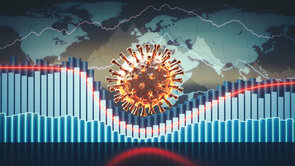
Profile
The positions in the table below reflect the Royal Melbourne Institute of Technology (RMIT University)'s position overall, domestically, within their sector, and in various subject areas based on their Share. Each position links to the corresponding table where Royal Melbourne Institute of Technology (RMIT University) is listed.
Position by research output Share
Position by research output Share in subject areas
Research
Overall research output
| Count | Share | |
|---|---|---|
| Overall | 108 | 28.01 |
Overall Count and Share for 'Royal Melbourne Institute of Technology (RMIT University)' based on the 12-month time frame mentioned above.
Research outputs by subject area
| Subject | Count | Share |
|---|---|---|
| Biological sciences | 11 | 1.24 |
| Chemistry | 51 | 13.87 |
| Earth & environmental sciences | 4 | 0.97 |
| Health sciences | 9 | 0.98 |
| Physical sciences | 65 | 17.53 |
Note: Articles may be assigned to more than one subject area, as a result the sum of the subject research outputs may not equal the overall research outputs.
Note: Hover over the donut graph to view the Share for each subject.
Share output for the past 5 years
Nature Strategy Reports
Identify research insights to guide research strategy and grow your impact with our Nature Strategy reports.
-
Actionable insights into research performance.
-
Detailed analysis of strengths and weaknesses.
-
Covers all major disciplines and regions of the world.

Explore the topics behind the 75,000 papers in the Nature Index 2024 Research Leaders
Collaboration
International vs domestic collaboration by Share
| Type | Percentage |
|---|---|
| International (361 institutions) | 49.8% |
| Domestic (95 institutions) | 50.2% |
Note: Hover over the graph to view the percentage of collaboration.
Top 5 domestic collaborators with Royal Melbourne Institute of Technology (RMIT University) by Share
Collaborating institutions
Share
Top 5 international collaborators with Royal Melbourne Institute of Technology (RMIT University) by Share
Collaborating institutions
Share
Job finder
Need to hire scientific researchers?
Nature Careers is visited by over 180,000 active jobseekers per month that you can target directly with your role. Application response rates have increased by 28% on average over 2022 averages.
Latest supplement
Affiliated joint institutions and consortia
- ARC Centre for Nanoscale BioPhotonics (CNBP)
- ARC Centre for Ultrahigh Bandwidth Devices for Optical Systems (CUDOS)
- ARC Centre of Excellence for Creative Industries and Innovation (CCI)
- ARC Centre of Excellence for Environmental Decisions (CEED)
- ARC Centre of Excellence for Green Electrochemical Transformation of Carbon Dioxide (GETCO2)
- ARC Centre of Excellence for Quantum Computation and Communication Technology (CQC²T)
- ARC Centre of Excellence for Transformative Meta-Optical Systems
- ARC Centre of Excellence in Exciton Science
- ARC Centre of Excellence in Future Low-Energy Electronics Technologies (FLEET)
- ARC Research Hub for Graphene Enabled Industry Transformation
- Australian Centre for Research on Separation Science (ACROSS)
- NERP Environmental Decisions Group (EDG)
- National Computational Infrastructure (NCI)
- National Environmental Science Programme (NESP)
- Terrestrial Ecosystem Research Network (TERN)
- Wound Management Innovation CRC (WMI CRC)


